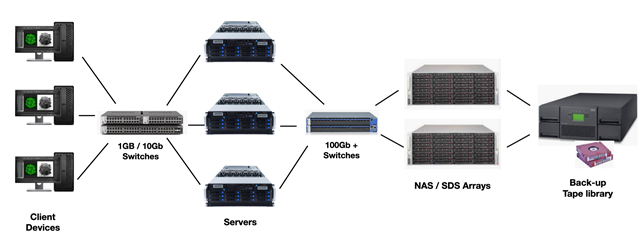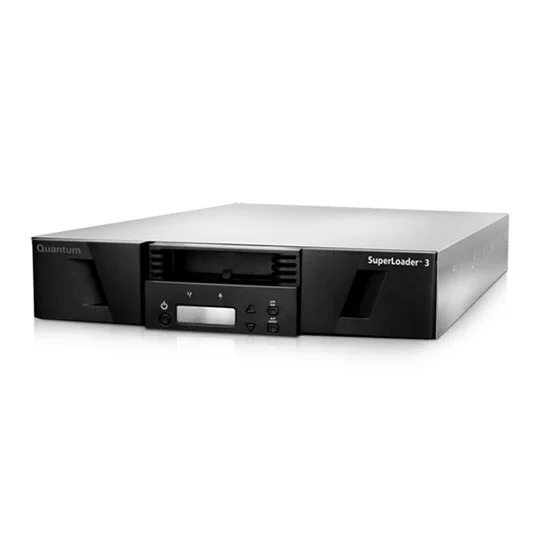Backup tape formats
Although all tape solutions use magnets tape to record the data, much like in most areas of technology there was no one standard tape format, with the options including DDS (Digital Data Storage), AIT (Advanced Intelligent Tape) and SDLT (Super Digital Linear Tape). Over the years each of these standards had multiple generations to provide additional capacity, however only a single type remains widely in use today - LTO or Linear Tape Open, often called by the brand name Ultrium.

LTO or Ultrium technology was first invented in 2000 and has since progressed through nine generations as of 2023, with a further five in the pipeline - it is supported by major storage brands including HPE, IBM and Quantum. These generations mainly differ in the capacities of an individual tape. The original LTO-1 versions had a capacity of 100GB uncompressed or 200GB compressed, and the latest versions 18TB and 45TB respectively. Compression offers the ability to fit more data onto a tape at a ratio of either 2:1 or 2.5:1 theoretically, but the ratio will differ with the type of data being written. The below table summarises the various LTO generations.
| Format |
Year Released |
Native Capacity |
COMPRESSED CAPACITY |
Max Speed (Native) |
Max Speed (Compressed) |
| LTO-1 |
2000 |
100GB |
200GB |
20MB/sec |
40MB/sec |
| LTO-2 |
2003 |
200GB |
400GB |
40MB/sec |
80MB/sec |
| LTO-3 |
2005 |
400GB |
800GB |
80MB/sec |
160MB/sec |
| LTO-4 |
2007 |
800GB |
1.6TB |
120MB/sec |
240MB/sec |
| LTO-5 |
2010 |
1.5TB |
3TB |
140MB/sec |
280MB/sec |
| LTO-6 |
2012 |
2.5TB |
6.25TB |
160MB/sec |
400MB/sec |
| LTO-7 |
2015 |
6TB |
15TB |
300MB/sec |
750MB/sec |
| LTO-8 |
2017 |
12TB |
30TB |
360MB/sec |
900MB/sec |
| LTO-9 |
2021 |
18TB |
45TB |
400MB/sec |
1.0GB/sec |
| LTO-10 |
2025 |
36TB |
90TB |
1.1GB/sec |
2.7GB/sec |
| LTO-11 |
TBC |
72TB |
180TB |
TBC |
TBC |
| LTO-12 |
TBC |
144TB |
360TB |
TBC |
TBC |
| LTO-13 |
TBC |
288TB |
720TB |
TBC |
TBC |
| LTO-14 |
TBC |
576TB |
1.44PB |
TBC |
TBC |
As with most technology, it is clear to see that with each generation the capacity increases and the speeds increase too. However, it must be pointed out that backwards compatibility is not a given. A general rule is that any generation of tape drive is compatible with the two previous tape generations, but not the ones prior to this - for example an LTO-9 drive will read and write to tapes from LT-9, LTO-8 and LTO-7 standards but not from LTO-6 or earlier. This means that if you have standardised on an LTO generation you either need to keep an older drive to read the older tapes or upgrade your whole archive. For this reason, older tapes right back to the original LTO-1 versions are still available to buy, and the drives are usually not superseded instantly by the new generation
either. It is also worth mentioning that it is still possible to get tapes from the defunct DDS, AIT and SDLT standards too, as much like LTO there will be significant install bases out there.



